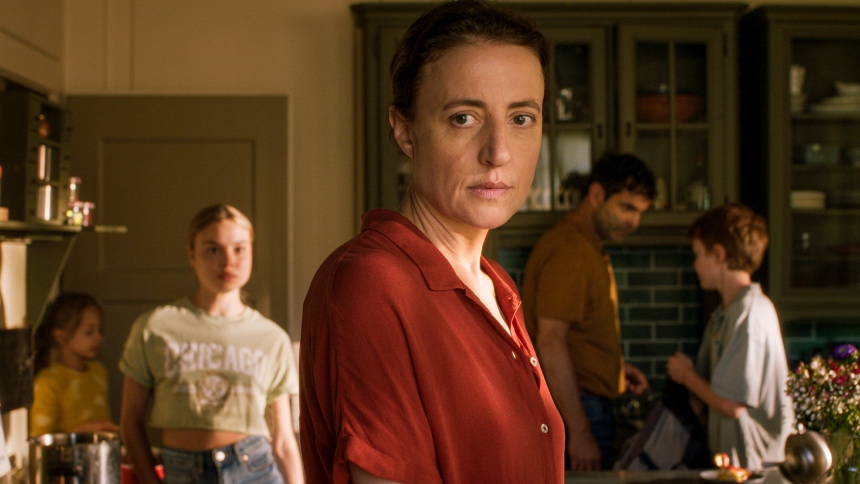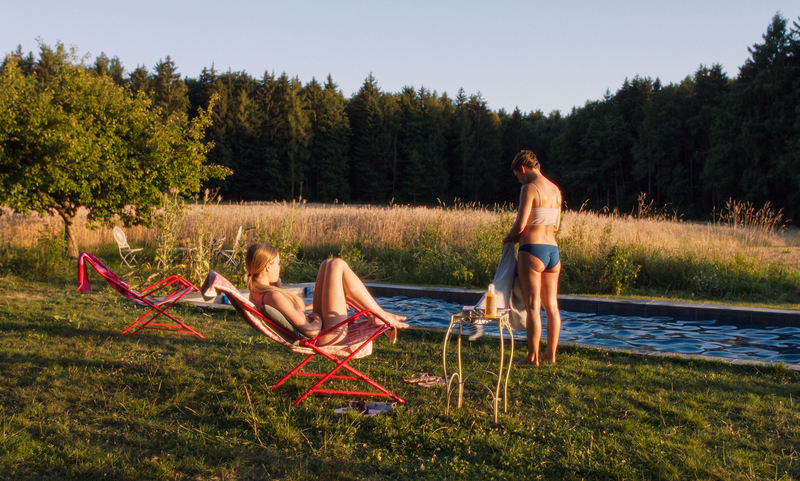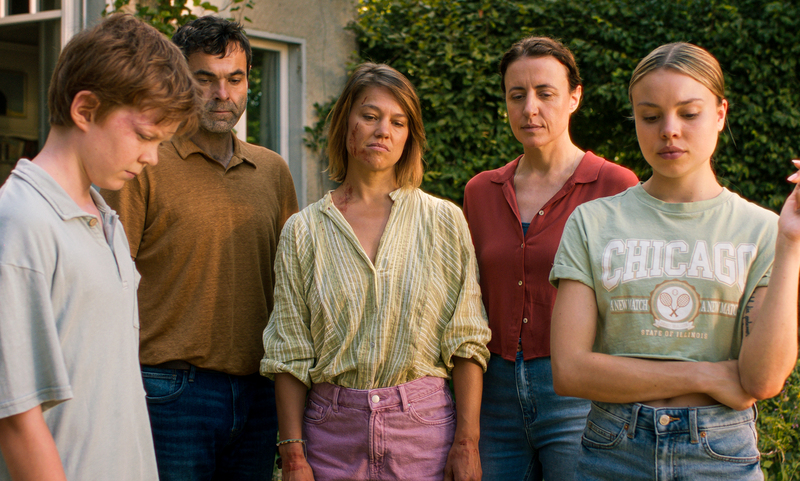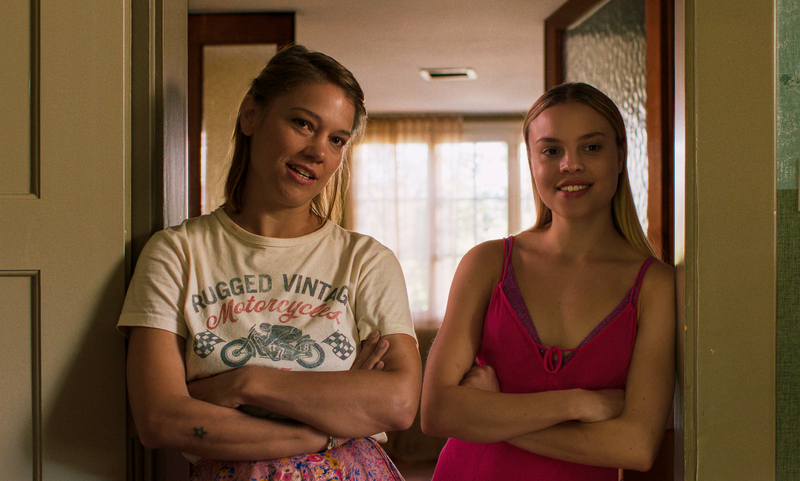Locarno 2024 Review: THE SPARROW IN THE CHIMNEY, Family Secrets, Psychosexual Turmoil, Masochistic Realism
Ramon Zürcher plunges into the dark undercurrents of family life, exposing the simmering resentments and hidden cruelties that lie just beneath the surface of a seemingly peaceful home.

The Sparrow in the Chimney, directed by Ramon Zürcher, delves into the psychological and emotional complexities of family life, crafting a story as tightly bound as the house in which it takes place.
The Zürcher brothers, renowned for their minimalist and often claustrophobic exploration of human behaviour, conclude their "animal trilogy" with a film that combines a study of domestic tension with a broader reflection on the quest for freedom within the confines of societal expectations. The last installment also marks a shift toward a more mainstream audience, while maintaining the distinctive style that has defined their previous work.
Ramon Zürcher’s approach (Ramon is credited with writing and directing, while Silvan Zürcher took over the producing duties) is characterized by an acute attention to the minutiae of human behavior. In earlier films from the trilogy, The Strange Little Cat and The Girl and the Spider, the Zürchers demonstrated a keen ability to capture the underlying tensions that simmer beneath the surface of everyday life.
These films are notable for their fixed spatial settings, where time seems to expand and contract, providing a deep exploration of the characters' psychological states. This approach continues in The Sparrow in the Chimney, where the Zürchers' examination of family dynamics reaches new levels of intensity.
Set almost entirely within a single house and its surroundings—a recurring motif in Zürcher's work—The Sparrow in the Chimney unfolds in a seemingly idyllic family home that becomes a pressure cooker of emotions. Karen (Maren Eggert), the protagonist, is confronted by the ghosts of her past and the stifling constraints of her current life. The film's title, referencing a sparrow trapped in a chimney, serves as a metaphor for Karen's own entrapment, both within the walls of her home and within the rigid roles dictated by family and society.
The story revolves around a family gathering to celebrate the birthday of Karen's husband, Markus (Andreas Döhler). The house, filled with their three children, Karen's sister Jule (Britta Hammelstein), her husband Jurek (Milian Zerzawy), and their infant daughter Edda (Luana Greco), soon becomes overcrowded.
The front door, frequently left open, serves as a running joke, as guests come and go while Karen, with a perpetually serious demeanor, prepares the feast. As everyone congregates, the house becomes increasingly claustrophobic, with the kitchen as the focal point of tension. What begins as a family comedy framed by the reunion shifts into an acid comedy of manners and then a psychosexual thriller that explores the implosion of the nuclear family, laden with generational traumas.
The seemingly idyllic setting soon reveals a dysfunctional family dynamic through the Zürchers' grounded, slightly surreal approach, amplified by a pervasive sense of second-degree masochism. Karen, the matriarch, oversees the unraveling of an unhappy family marked by ungrateful children and an unfaithful husband.
The youngest child, Leon (Ilja Bultmann), compensates for the bullying he endures from peers by immersing himself in culinary arts. Christina (Paula Schindler), Karen's eldest daughter, returns from college with evident reluctance, while the second daughter, Johanna (Lea Zoe Voss), explores her emerging sexuality amid growing animosity toward her mother.
The family dynamic becomes more complex with the addition of Liv (Luise Heyer), a volatile dog walker with a history of arson who lives in a small shed on the property, a place tied to a scandal involving Karen’s mother and her lesbian tryst. As the family history unfolds, simmering resentments against Karen come to the fore.
The film portrays the family unit, often idealized as a bastion of support and love, as a site of repression, control, and resentment. Karen, the film’s anti-hero, charts a narrative of violent and masochistic liberation from past and present burdens, conventions, and expectations, culminating in a cathartic yet unsettling release.
The Sparrow in the Chimney is a surprisingly transgressive drama in which the children show little empathy for their pets or parents, while masochistic tendencies are subtly redirected into sadistic undercurrents. The film explores how deep-seated resentments and buried emotions can surface in unexpected and often disturbing ways, transforming everyday interactions into moments of psychological tension and emotional violence.
The narrative's strength lies in its ability to capture these shifts without resorting to explicit conflict or overt drama. Instead, the Zürchers use subtle gestures, loaded silences, and offhand remarks to convey the complex emotional landscape of the family. This nuanced portrayal of interpersonal dynamics allows the film to delve into the darker aspects of human behavior, revealing how closely love and cruelty can coexist within the same familial bonds.
The film's approach to storytelling is both restrained and provocative, using its tightly controlled setting to amplify the characters' emotional states. By confining the action to a single location, the Zürchers create a sense of intimacy that heightens the impact of every glance, gesture, and spoken word. The result is a film that feels both immediate and unsettling, drawing the audience into a world where the ordinary is charged with latent threat and the boundaries between affection and animosity.
As the story progresses, the film gradually dismantles the veneer of normalcy that initially surrounds the family gathering. The suffocating atmosphere of the house mirrors the internal turmoil of its occupants, and the narrative becomes a series of revelations and confrontations, each peeling back another layer of repression and untold pain. Karen’s interactions with her family members reveal the deep fractures beneath their polite facades, and what starts as subtle discomfort escalates into overt conflict.
Karen´s family, each member battling their own sense of entrapment and disillusionment, is portrayed in a way that resists easy categorization. Karen’s stoic demeanor hides her growing sense of desperation and dissatisfaction, while Markus's aloofness masks his own failures and insecurities. The children, each dealing with their emerging identities and the weight of family expectations, react in unpredictable ways, from Leon’s obsessive cooking as a form of escape to Johanna’s rebellion against her mother’s authority.
A notable difference in this final installment of the trilogy is its scale. The Sparrow in the Chimney is a more expansive film compared to its predecessors, featuring a larger cast, higher production values, and a nearly two-hour runtime.
Despite the claustrophobic atmosphere, the film is less spatially confined than the earlier works. This installment also represents the Zürchers' tentative move toward a broader audience, without abandoning their distinctive poetics that extract the surreal from the mundane and explore emotional and physical violence in rich variety of different shades.
As the plot intensifies, the boundaries between reality, imagination, and internalized experience blur, culminating in a family drama that is both literal and metaphorical. Several digressions in the film serve to extend the runtime, not necessarily advancing the plot but providing a reprieve from the micro-aggressions and latent hostilities.
The film's budget has been utilized for visual effects, enhancing some scenes, and one particularly striking sequence that echoes the hallucinogenic style worthy of Gaspar Noé. Karen’s immersion into a liminal state between the real and surreal is a surprising but fitting addition, aligning with the Zürchers' aesthetic of daydreaming with mundane surrealism without veering into trippy pyrotechnics.
The Sparrow in the Chimney is a bold and thoughtful conclusion to the animal trilogy, offering a layered examination of family life that traverses psychoanalytical and formalistic terrain. The film not only critiques the idealized notions of family but also questions the societal norms that uphold them. What begins as a Chekhovian drama evolves into a Freudian spectacle, ultimately becoming a surreal and cynical reflection on family life, not for the faint of heart.
Additionally, the film presents an unexpected and highly unorthodox portrayal of a feminist story, depicting a woman’s journey toward empowerment through almost misanthropic territory that brings to mind Lanthimos-Filippou´s "psychopathic" realism but in sunnier package.
Der Spatz im Kamin
Director(s)
- Ramon Zürcher
Writer(s)
- Ramon Zürcher
Cast
- Maren Eggert
- Britta Hammelstein
- Luise Heyer










